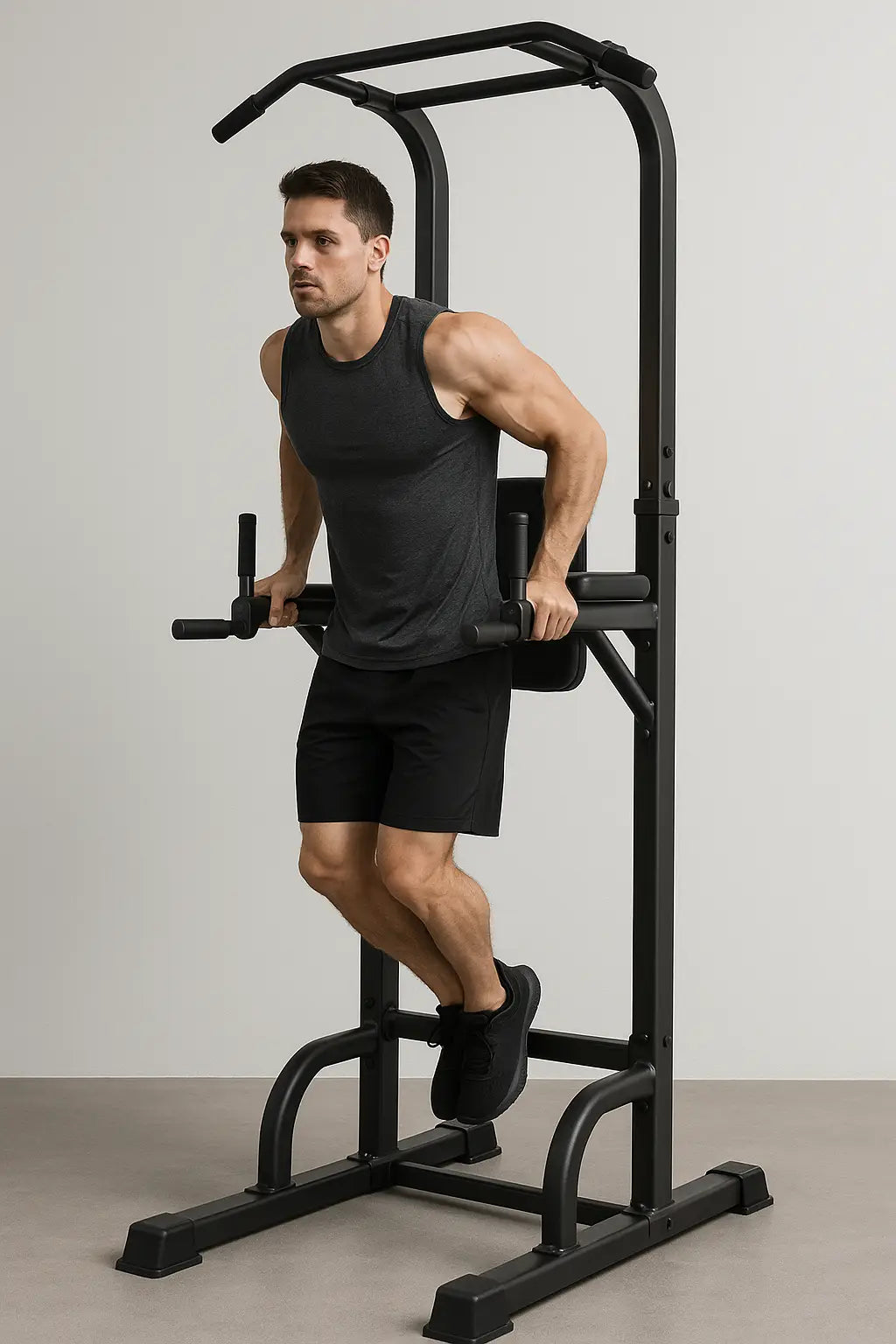
Struggling With Weak Arms? Here’s How a Dips Workout Fixes It
Share
Tired of Weak Arms Holding You Back? Dips Can Change That
Ever tried lifting a grocery bag and felt your arms give out halfway to the door? Or maybe you dropped mid–push-up and thought, Wow, I really need to work on this. Don’t worry—you’re not alone. Weak arms are one of the most common struggles people face, and it’s not just about looks—it affects your strength, your posture, and even your confidence.
But here’s the good news: one simple, old-school move can change the game—dips. If you’ve been avoiding them, thinking they’re too advanced or risky, it’s time to reconsider. Dips are like the secret weapon for stronger, sculpted arms. And with the right technique (and the right equipment), you can go from noodle arms to rock-solid confidence.
Why Dips Are the Ultimate Arm Builder
So, what makes dips so powerful? Unlike bicep curls that target only one muscle, dips are a compound exercise. That means they hit multiple muscle groups at once:
-
Triceps: the star of the show, responsible for the push and extension.
-
Chest: activated when you lean slightly forward during dips.
-
Shoulders: stabilized and strengthened through the movement.
-
Core: engaged to keep your body stable.
That’s four muscle groups firing at once—all with just your body weight. This makes dips not only efficient but also functional—they build real-world strength that translates to everything from pushing a stroller to dominating push-ups.
The Common Mistakes That Hold You Back
Now, here’s the catch: most people do dips wrong. And when they do, they end up frustrated, injured, or convinced that dips just “aren’t for them.” Let’s clear the air with some quick fixes:
-
Going too low
-
Dropping past 90° puts unnecessary strain on your shoulders.
-
Solution: Stop when your elbows are at a 90° bend.
-
-
Flaring elbows out
-
This reduces efficiency and risks joint pain.
-
Solution: Keep elbows tucked closer to your body.
-
-
Rushing the movement
-
Fast reps mean poor control and little strength gain.
-
Solution: Lower slowly (2–3 seconds), press up powerfully.
-
Want to avoid these mistakes easily? A stable dip station makes all the difference. That’s where the Multi-Functional Workout Station Wall Mounted Fitness Solution – Fortira Fitness comes in. With parallel bars at the perfect width, it sets you up for safe and effective dips every time.
Step-by-Step: How to Do Dips Correctly
Let’s break it down:
-
Setup: Grip the bars firmly and straighten your arms to lift your body off the ground.
-
Lowering: Slowly bend your elbows to bring your body down until they reach a 90° angle.
-
Press Up: Push back to the starting position, focusing on squeezing your triceps.
-
Breathing: Inhale as you go down, exhale as you push up.
Modifications for Beginners:
-
Place your feet on the ground for support.
-
Try partial range of motion until you build strength.
Advanced Variations:
-
Add a weight belt or place a dumbbell between your legs.
-
Slow the tempo (5-second negatives).
And guess what? All of these variations are possible with the Multi-Functional Workout Station Wall Mounted Fitness Solution – Fortira Fitness.
Why the Multi-Functional Workout Station Is Perfect for Dips
Sure, you could try dips on a bench or even between chairs—but let’s be real, that’s unstable and risky. The Multi-Functional Workout Station Wall Mounted Fitness Solution – Fortira Fitness gives you a dedicated, safe space to practice dips and more. Here’s why it’s a game-changer:
-
Parallel Bars at the Right Height: Keeps shoulders safe and form consistent.
-
Multi-Use Design: Beyond dips, you can do pull-ups, push-ups, knee raises, and more—making it a full-body home gym solution.
-
Compact & Sturdy: No wobbly chairs or improvised setups.
In other words, this isn’t just a piece of equipment—it’s your ticket to stronger arms, a stronger core, and a complete workout at home.
Sample Dips Workout Plan for Stronger Arms
Beginner Plan (2x per week)
-
Assisted dips: 3 sets of 8–10
-
Push-ups: 3 sets of 10–12
-
Resistance band triceps extensions: 2 sets of 12–15
Intermediate Plan (3x per week)
-
Bodyweight dips: 4 sets of 10–12
-
Incline push-ups: 3 sets of 12
-
Inverted rows: 3 sets of 6–8
Advanced Plan
-
Weighted dips: 4 sets of 8
-
Close-grip push-ups: 3 sets to failure
-
Pull-ups: 4 sets to failure
With the Multi-Functional Workout Station Wall Mounted Fitness Solution – Fortira Fitness, you can seamlessly do all of these moves in one spot—no gym membership required.
Real-Life Benefits: Beyond the Mirror
It’s not just about bigger arms—it’s about functional strength. After a month of consistent dips, you’ll notice:
-
Carrying heavy bags is easier.
-
Push-ups and bench press numbers improve.
-
Posture and shoulder stability feel better.
-
Confidence skyrockets when you see your arms toned.
This isn’t about “looking fit.” It’s about being strong in everyday life.
From Weak to Powerful: Your Next Step
Weak arms don’t define you—they’re just a starting point. The dips workout is one of the fastest ways to build lasting strength, and with the right equipment, you can do it safely, effectively, and consistently.
So, here’s the move:
Start your journey today with the Multi-Functional Workout Station Wall Mounted Fitness Solution – Fortira Fitness. Your arms—and your future self—will thank you.
1. Are dips good for beginners with weak arms?
Yes! Beginners can absolutely start dips by using assisted variations, such as keeping feet on the ground or using resistance bands for support. Over time, strength improves, making full bodyweight dips achievable.
2. What muscles do dips work?
Dips primarily target the triceps, but they also engage the chest, shoulders, and core. By adjusting your posture slightly—leaning forward or staying upright—you can shift the emphasis between chest and triceps.
3. How many dips should I do as a beginner?
Start small: 2–3 sets of 6–8 assisted dips is plenty. Focus on form over volume. Once you can do 10–12 clean bodyweight dips, you can increase reps, sets, or add resistance.
4. Can dips replace push-ups or bench press?
Not entirely. Dips are amazing for building triceps and overall pushing power, while push-ups and bench presses focus more on the chest. For best results, combine all three in your workout routine.
5. How do I avoid shoulder pain when doing dips?
Avoid dipping too low—stop at about a 90° elbow bend. Keep elbows closer to your sides, maintain control, and avoid flaring outward. Shoulder discomfort usually comes from poor form or excessive depth.
6. Can I do dips every day?
It’s not recommended. Dips work multiple upper-body muscles, and they need time to recover. Aim for 2–3 sessions per week with at least a day of rest in between.
7. Do I need special equipment for dips?
Not strictly, but it helps. While you can do dips on a bench or between chairs, dedicated dip bars or a workout station provides better safety, stability, and range of motion.

